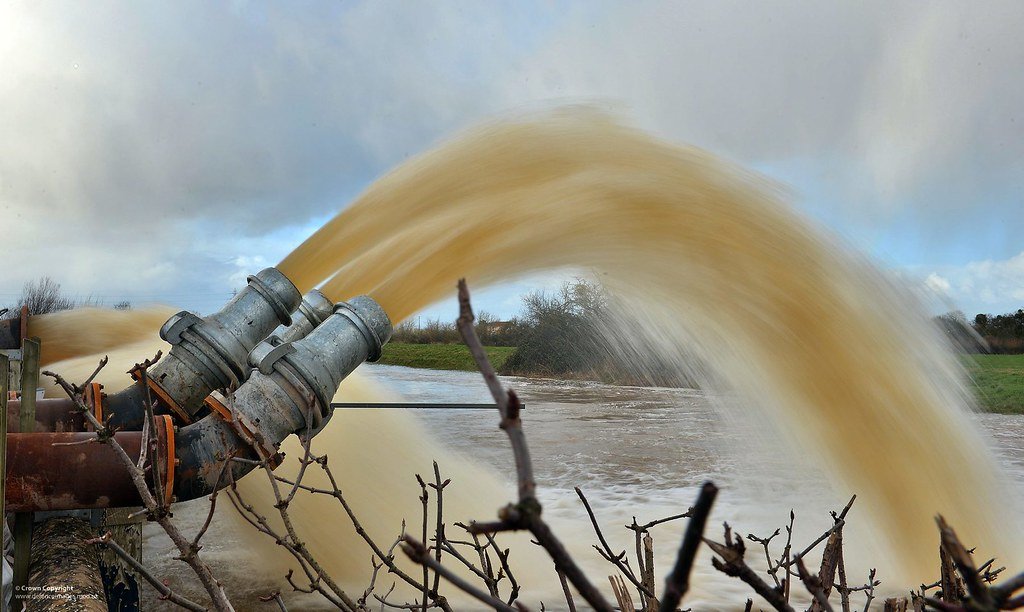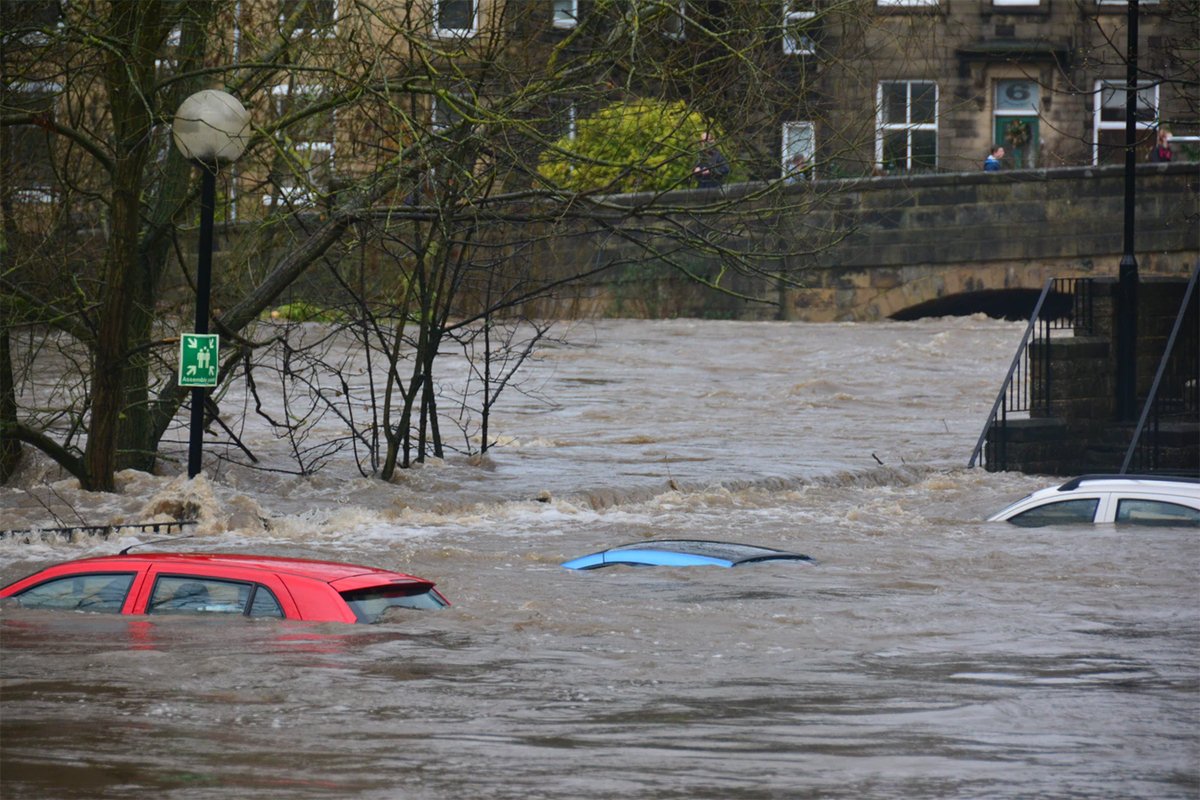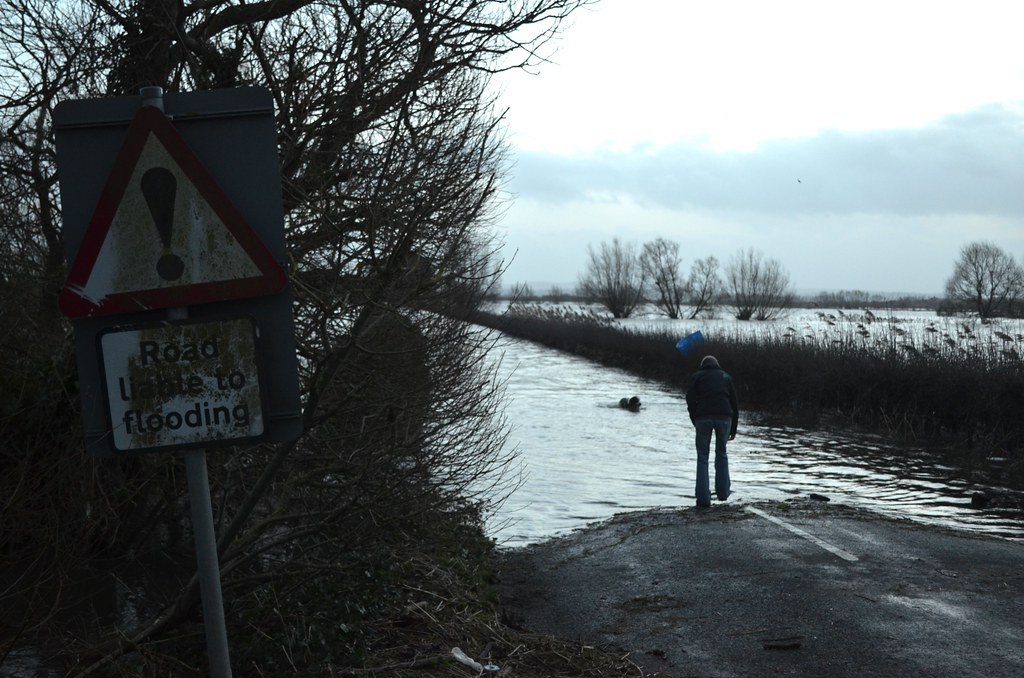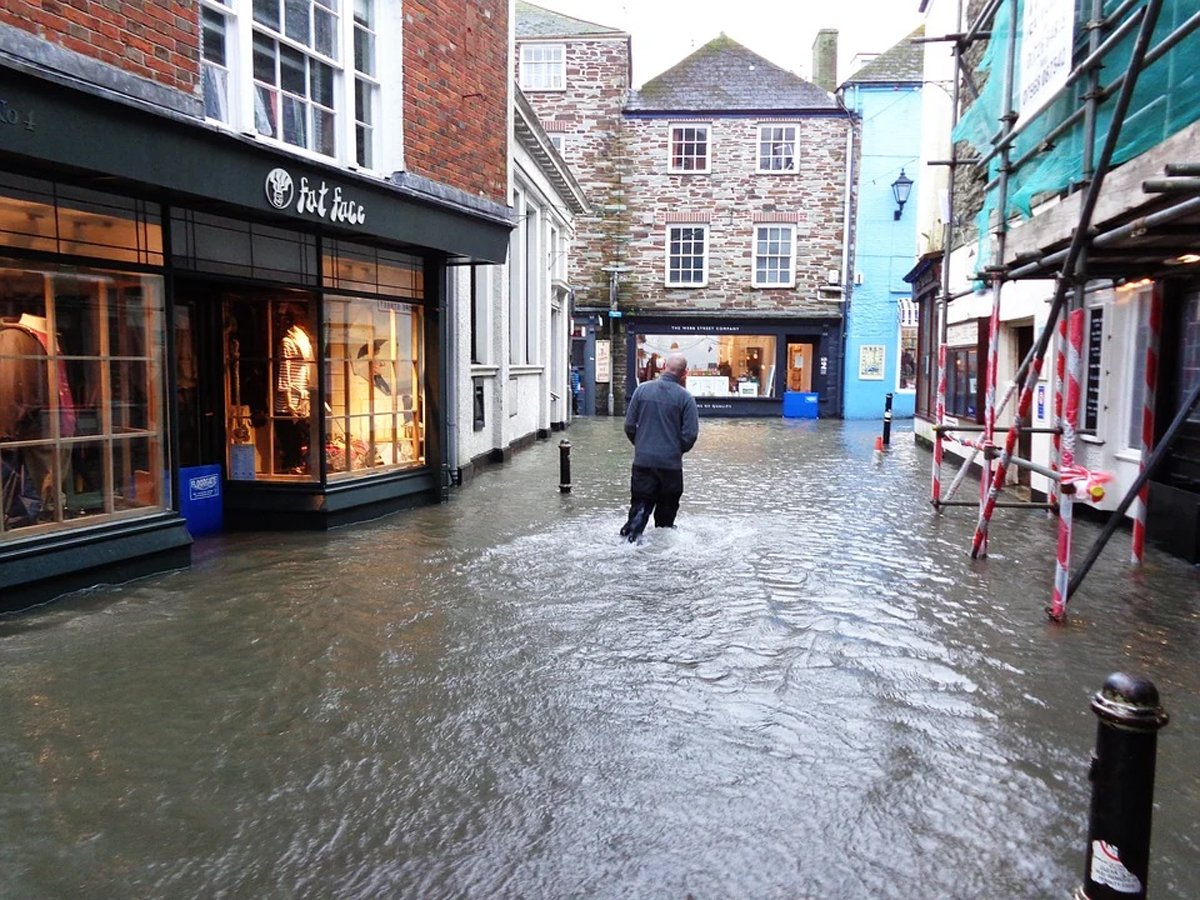
On 22 January, after Storm Christoph hit the UK, George Eustice said on camera that 70 homes had been flooded. Given the pictures of inundated towns across England and Wales, this figure seemed something of an understatement, with the Daily Telegraph, amongst others, reporting a figure more than five times higher: Storm Christoph: Around 400 homes flooded.
Eustice, Conservative MP for Camborne and Redruth since 2010, and now Secretary of State for the Department of Environment, Food and Rural Affairs (Defra), has not always appeared to be the most consistent or reliably honest of politicians. In order to boost his Euro-sceptic credentials before the EU Referendum, he reminded voters that he had stood as a UKIP candidate in European Parliament elections in 1999, and stated that he wanted “to bring powers back from Europe while staying in the single market for trade.” (That went well, then!) He claimed that the badger cull was cutting bovine TB even though, as reported in The Guardian, scientist-reviewed figures did not bear this out. Whilst campaigning for the UK to leave the EU, his own webpage carried promises such as “If we act decisively and leave, we will … deliver the change our fishing industry so craves.” This article by Tom Scott in West Country Voices lays bare Eustice’s duplicity: Useless Eustice? No, he’s much worse than that.
No wonder some people don’t always believe what he says.
His recent claim about the flood damage also raises doubts about the Environment Agency (EA)’s response. I vividly remember the floods in Somerset in 2014, when we lived not far from the low-lying area called the Levels. The winter had brought weeks of rain and by mid-January not only were the fields of the Levels flooded, but also hundreds of houses and farms. News pictures showed vast areas under several feet of water, homeowners in tears, and farmers at their wits’ end. Officials and ministers arrived ‘to assess the situation personally’, in suspiciously-new-looking wellington boots, and opprobrium was heaped on the EA for its failure to protect peoples’ livelihoods and property. A visit – much welcomed by locals – from the Prince of Wales shamed the authorities into action.

Eventually aid arrived, partly in the form of a Sikh organisation from the Midlands, whose members fell to and helped with anything that needed doing, and partly in the form of 13 enormous pumps brought from the Netherlands, which pumped 7.3m tonnes of water a day off the Levels and into the rivers. The process still took weeks. Some houses were not habitable again even two years afterwards.
The EA was accused by locals of having failed in its duty by not having followed the accepted and long-established practice of dredging the rivers and large drainage channels regularly, although – heaping insult on top of injury – the Agency insisted that even if dredging had continued, it would not have made any difference to the scale of flooding. The EA was also accused of deliberately ‘sacrificing’ the homes and businesses on the Levels in order to protect the large towns of Bridgwater and Taunton. It is true that if water had not been held on the Levels there would have been significant flooding elsewhere, but much of the ground is so low-lying that it would not drain naturally, and the UK had no pumps large enough to sort out the problem. In the ensuing months the EA was forced to backtrack on its previous policy for dredging, and millions of pounds of taxpayers’ money were spent clearing accumulated silt from rivers and large drainage channels.
Since then, the frequency and severity of ‘extreme weather events’ have increased as the effects of climate change worsen. Before 2000, major floods were calculated to occur every 15-20 years, but they are now expected every two to five years. In the light of its previous failings, the EA’s plans and operations remain under close scrutiny.

It might surprise readers to learn that the EA is not wholly responsible for flood defences. Of the 59,000 flood defences described as ‘vital’, just under half are managed by third parties, including private landowners. An EA report obtained by Greenpeace and shared with The Guardian in Januaryfound that almost 8 per cent of flood defences managed by third parties were judged by the EA to be in a “poor” or “very poor” condition. Clearly, this could mean the future failure of some defences and consequent flooding.
In the aftermath of Storm Christoph, Eustice was keen to reassure everyone that the government is taking flooding seriously: it will be allocating £5.2bn to the issue over the next five years. That looks good, given that the EA calculated in 2019 that it needs £1bn a year to fulfil its current responsibilities – but over the whole of the past five year period it has only been able to spend £2.5bn! There must surely be a substantial backlog of work required, which is reflected in the findings of the Greenpeace report.
The government also seems sensitive to criticism about the EA’s performance, rebutting some of The Guardian’s claims about the state of the country’s flood defences. The Defra in the media blog (who knew?) takes The Guardian to task: “when defences are listed as below the required condition it does not necessarily mean [author’s italics] that they have structurally failed, or that performance in a flood is compromised.” The subtleties of this argument would be lost on people flooded out of their homes.
It goes on: “During Storm Christoph, no properties were flooded due to the failure of permanent flood defences managed by the Environment Agency.” At first sight this looks impressive enough, until one remembers that only about half the country’s flood defences are managed by the EA; many thousands are not.

One of the third parties responsible for flood defences is the Sheffield City Region Combined Authority. The mayor Dan Jarvis was quoted as welcoming an additional £80m given to the region in January for flood management projects, but described the funding as “a sticking plaster over a much bigger wound”. The authority has identified 27 projects that would protect 10,300 homes and 2,800 businesses from flooding. Another third party is the Canal and River Trust, a registered charity which owns Toddbrook Reservoir above Whaley Bridge in Derbyshire where, in August 2019, desperate efforts had to be made to avoid the concrete dam giving way after heavy rainfall.
The EA’s weakness when it comes to defences maintained by third parties is made clear in the National Audit Office’s 2020 report on managing flood risk.
“the EA has to rely on a wide range of other bodies to help deliver its strategy but struggles to coordinate their activities. Responsibility for surface water flooding … falls to lead local flood authorities but EA struggles to coordinate their activities and cannot compel them to provide information … Its local area teams are not communicating asset maintenance requirements consistently with third-party owners.”
‘Extreme weather events’ are only one cause of flooding; another is the number of houses which have been built on what are widely known to be flood plains. Planning authorities are frequently blamed for ‘allowing’ such building; but councils with increasingly limited funds are under huge pressure to meet projected housing need. If destined for social housing, the cheapest land is very often flood plain land. Historically it was often difficult – especially in the face of a determined developer with deep pockets – for a local authority to refuse planning applications for housing on land which might be subject to periodic flooding. Planning controls were relaxed by the coalition government in 2011 and since then the arguments over whether it is acceptable to build on flood plains have continued: Build on flood plains despite the risks, say UK government advisers (The Guardian, 27 January 2016; Building new homes on land prone to flooding ‘making damage worse’ (The Guardian, 25 February 2020).
All land in the UK is designated in one of four ‘flood zones’ which describe the likelihood of its flooding – Zone 1 being the lowest and Zone 3b the highest. Zones 2, 3a and 3b cover vast areas of the country and developers are required to propose flood mitigation measures, but in many cases the EA raises no objection to proposals because the site is behind existing flood defences, which are considered to be adequate to prevent serious flooding.
There are signs the government accepts that problems are being stored up for the future: in March 2020 Robert Jenrick, the Secretary of State for Housing, Communities and Local Government, told the House of Commons in a speech entitled Planning for the Future that he intended to review the government’s policy, “to prevent building in areas of high flood risk”. It has yet to be seen whether this review will be fast or thorough enough to prevent much more of what government ministers unfailingly describe – rightly – as the “devastation” and “misery” caused by flooding.

In the meantime, the government seems keen to try to spread the responsibility for managing flood risk still further. In 2016 the Flood-Re scheme was announced, to increase access to insurance for home-owners whose properties are at high flood risk, and to encourage uptake of flood resilience measures. This ‘levy and pool’ scheme is due to last until 2039, by which time it is intended that insurers will be able to offer free-market policies based on actual flood events, and taking into account flood resilience home improvements carried out during the period.
The government also wants to encourage communities to take more control over how they prepare for and respond to flooding, and homeowners to “build back better” after floods by considering measures such as re-installing electrics higher up in walls, providing the means to put up flood doors etc. Some councils are now – belatedly – discouraging the paving-over of front gardens to provide car parking, a practice which has contributed to huge run-off of rainwater from impermeable surfaces into storm drains. Such measures are undoubtedly worthwhile, but in the face of the increasing threat from serious, repeated flooding to so many communities – including those at risk from flooding caused by coastal erosion – they seem to be too little, too late.
If the EA looks for meaningful support from its government sponsor Defra, and its secretary of state, it may be disappointed: the House of Commons Public Accounts Committee recently reminded the government of its 2011 promise to improve the natural environment – including combating climate change – “within a generation”, and reported that (in another example of this government’s tendency to over-promise and under-deliver), the commitment is unlikely to succeed. It warned of ministers running out of excuses and said, “the Department for Environment, Food and Rural Affairs has policy responsibility for most of the plan and relies on other departments to play their part; yet the Department has not shown that it has the clout to lead the rest of government.”
Eustice is clearly out of his depth and even if he ditches his wellies for waders, he’s still going to get wet!






